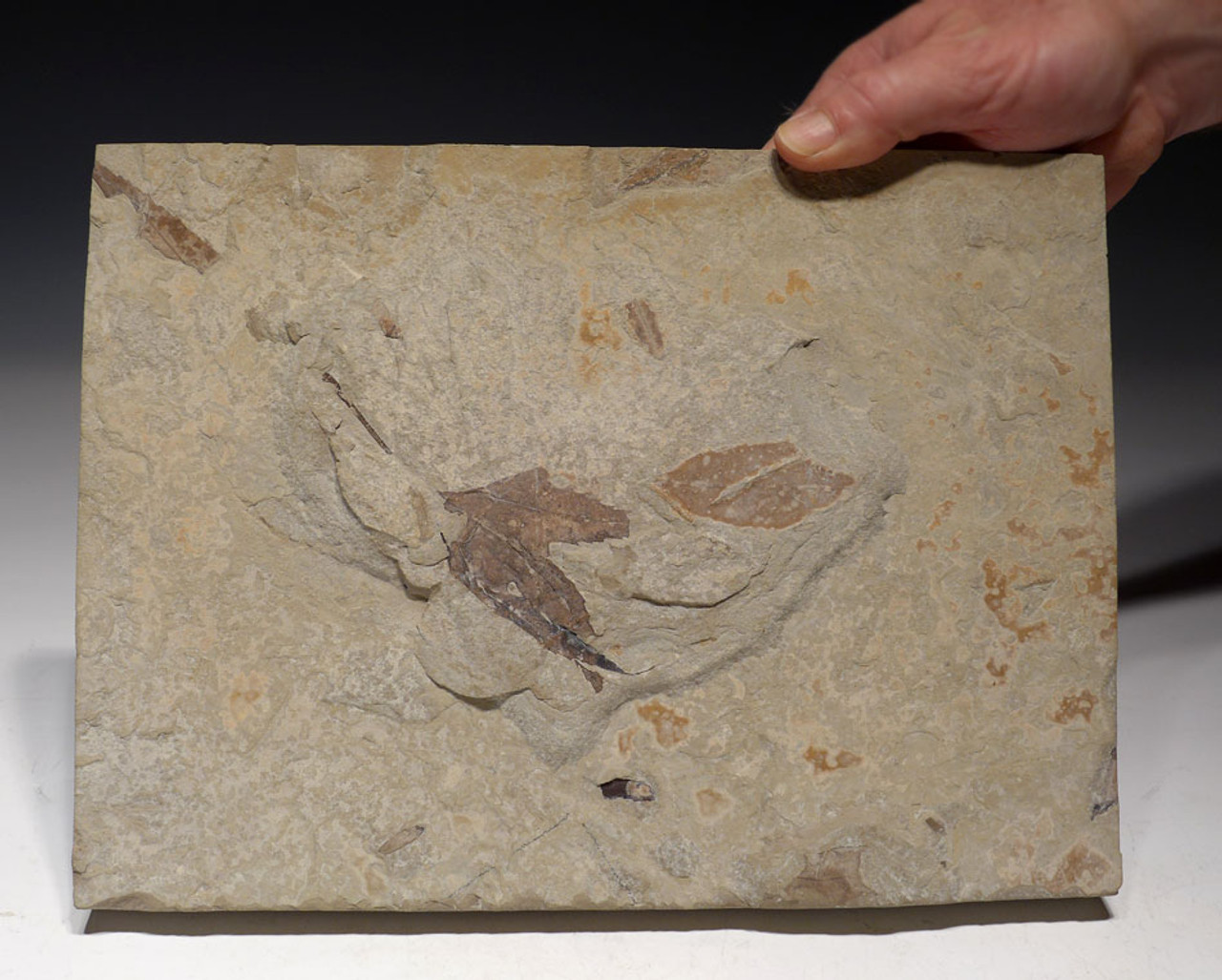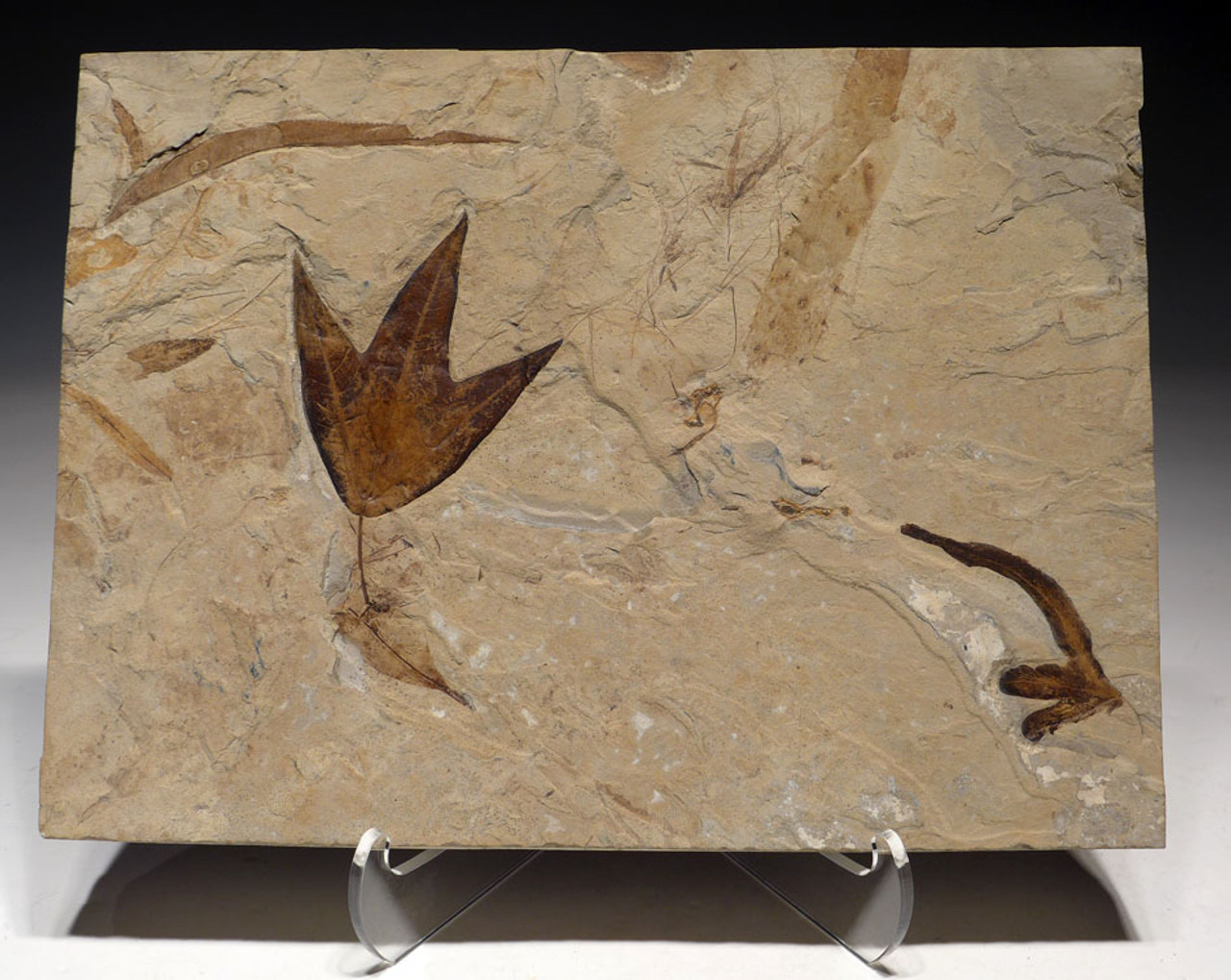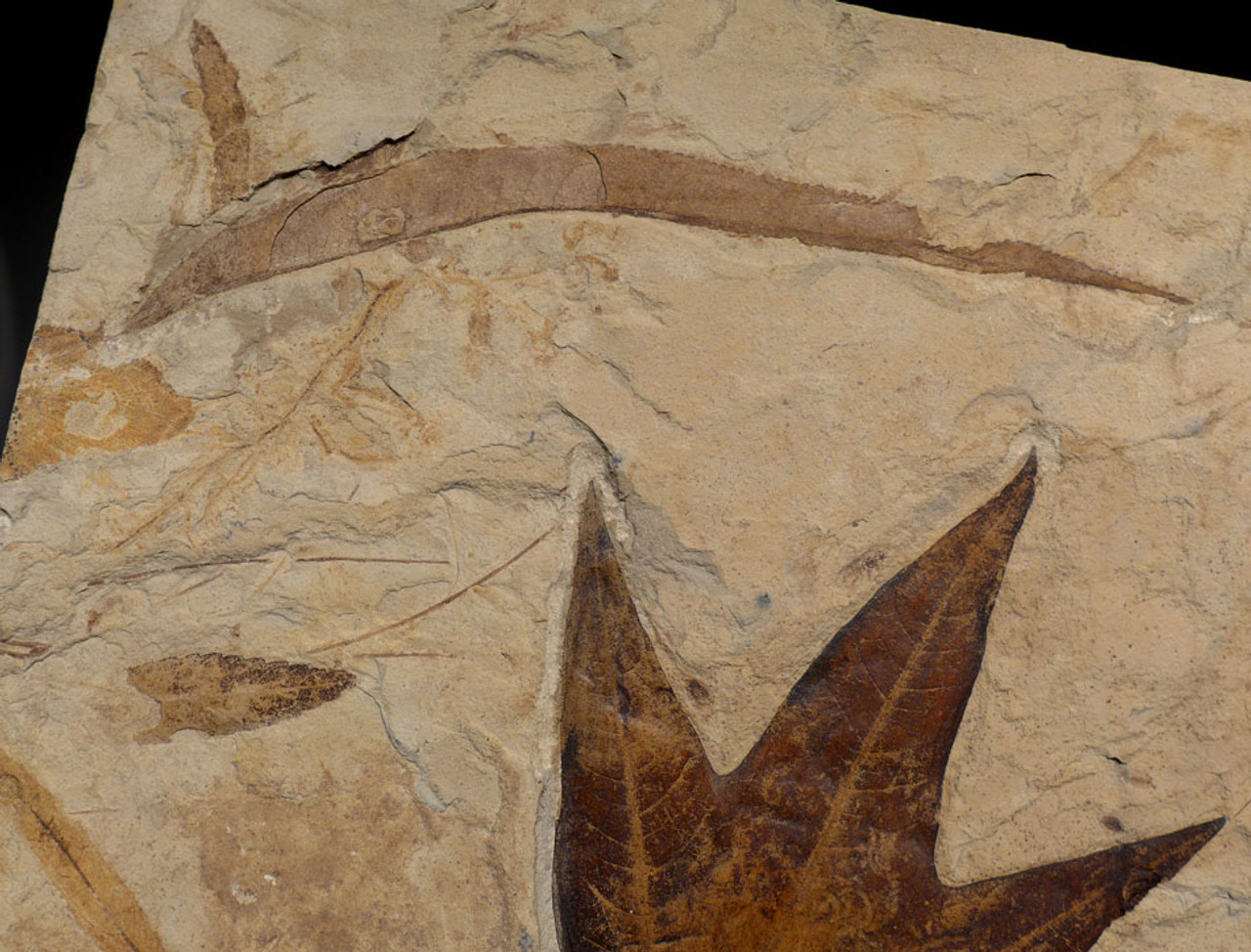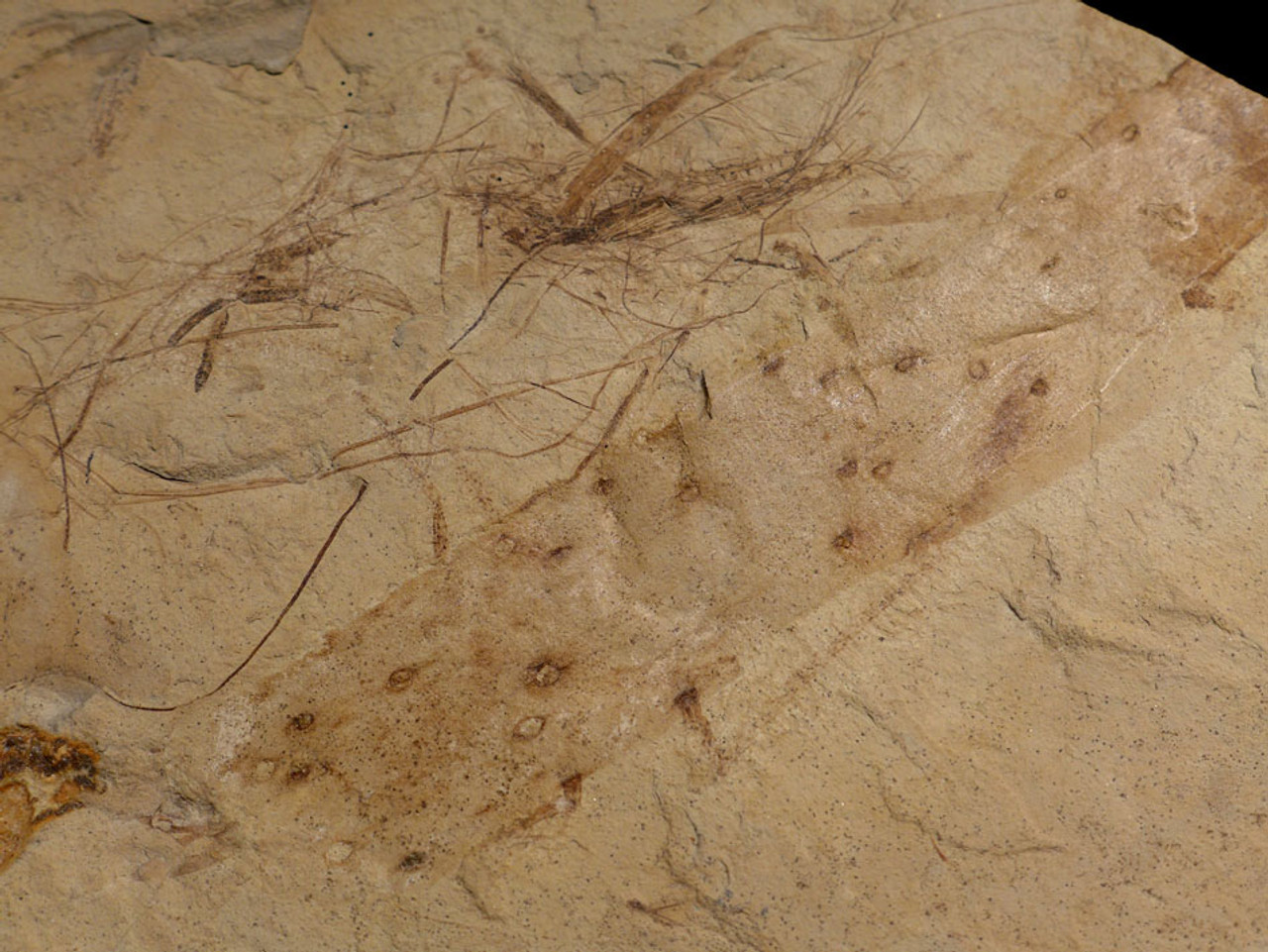Product Description
ITEM #
|
PL084
|
||
ID
|
Bird Feather, Platanus wyomingensis, Lygodium kaulfussil,
|
||
FOUND
|
Green River Formation Uintah Co., Utah, USA
|
||
AGE
|
MIDDLE EOCENE: 48.6 - 37.2 million years ago
|
||
SIZE
|
12" x 9" x 1' thick overall, leaf 3.5" not including stem
|
||
CONDITION
|
NO REPAIR OR RESTORATION, PIGMENT ON ALL FOSSILS
|
||
NOTE
|
STUNNING SHOWPIECE - LARGER THAN TYPICAL LEAF
|
||
INCLUDES STAND - Actual Item - One Only
Comes with a certificate of authenticity / information sheet |
|||
CLICK HERE TO LEARN MORE ABOUT PLANT FOSSILS
From the famous Green River Formation in Utah, this is a SPECTACULAR fossil slab of a "slice" of Middle Eocene life of the region. In perfect preservation is a 3-lobed prehistoric Sycamore leaf of the species Platanus wyomingensis. To the lower right is a leaf from a Climbing Tree Fern, Lygodium kaulfussii. The large, long leaf near the top is a Willow Leaf, Salix cockerell. Scattered about are fossil leaves of the Keaki Tree, Zelcova nervosa as well as other various leaves and tree stem fossils.
What is most special about this piece, aside from the STUNNING Sycamore leaf fossil, is the presence of a large, damaged bird feather in the upper right region. To see such a dense array of a variety of leaf and plant fossils in association with a BIRD FOSSIL makes this an exceptionally impressive piece for display and study. Even the back side features of a number of plant fossils of incomplete preparation.
The slab is very large and sawn for a truly fantastic presentation. Where many slab-type fossils are artificially enhanced with paint and stain, this remarkable specimen is 100% ORIGINAL WITH NO ARTIFICIAL PIGMENTS and only a clear sealer applied to the main fossils. The variations in the pigment on the leaves attests to their natural origin. Artificially colored leaf fossils from this region are most often a solid, non-varying hue.
One of the most important fossil sites for understanding the Eocene is found at Green River, located in western Colorado, eastern Utah and southwestern Wyoming in the United States. During the Eocene, this region was located at much the same latitude it is today, though global climate was more equable. Therefore, the climate in which the organisms lived differs somewhat from that of the present-day western United States. The fossils, especially plants, found at this site indicate that the climate was moist temperate or sub-tropical, with temperatures ranging from 15 to 20 degrees Celsius. In addition to the plants, another piece of evidence suggesting that the climate was sub-tropical was the presence of fossilized crocodiles. Crocodiles can only survive in areas with a constant, warm temperature.
If you were able to visit the Green River locality during the Eocene, you would see palms, cat-tails, sycamores, and other familiar plants from North America, but you would also see some that are today more common in, or restricted to, eastern Asia. A series of large inland lakes extended across the region, and it is in the bottoms of these lakes that various plants and animals were buried and fossilized. These lakes later dried up as the local climate changed, and many of the plants and animals living there became extinct.
 US DOLLAR
US DOLLAR
 EURO
EURO
 AUSTRALIAN DOLLAR
AUSTRALIAN DOLLAR
 CANADIAN DOLLAR
CANADIAN DOLLAR
 POUND STERLING
POUND STERLING


















